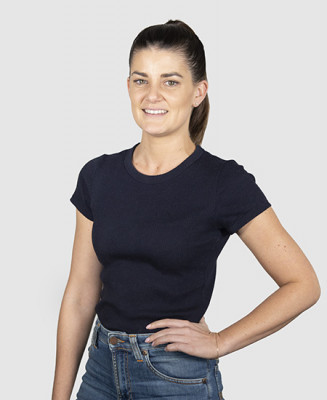It’s time to let you in on a little secret; An effective and well-planned landing page can be your biggest lead driver. We know, mind blown!
A great landing page will not only look pretty swish but, it will also bring more traffic to your site by improving your search engine results positioning, increase your domain and page authority and convert visitors into leads. Boom!
Before we get too deep, let’s clarify the difference between a homepage and a landing page. To put it simply a homepage is informative and the post-click landing pages are persuasive. Homepages give an overview of the brand or business, house loads of information and set the tone, whereas landing pages give a more in-depth view of a particular aspect (product or service) persuading a visitor to become a lead.
There a few elements to keep in mind when planning an effective landing page. To make it a little easier, the following checklist will guide you on your journey to landing page greatness.
Decide on a clear goal or objective
First and foremost, ensure that you have a clear goal or objective for the landing page. Landing pages have one goal; to convert traffic. Decide what the primary objective is for the landing page you’re planning. It’s best practice that if you have a second objective to create a separate landing page so users can differentiate and are more likely to convert.
Confirm who your audience is
Keep your audience and their demographic front of mind throughout the planning process. Where are the visitors coming from? Are they clicking through from a Display or Social ad? Have they been sent this link via one of your eDMs? What are they looking for when they click-through?
Write compelling or educational headings
The main heading is the first thing that people see when they land on your page and it’s your first opportunity to engage and persuade to like what they see. Ensuring the heading and subheadings are compelling or educational will keep visitors wanting more. Most importantly, headings are your first opportunity to implement your SEO strategy by utilising high ranking keywords. Having subheadlines in question form can also help your page to rank as a featured snippet.
Source relevant imagery
Visual content not only makes your landing page aesthetically pleasing, but it is also important in supporting your message - particularly if you are promoting a product. Ensure the imagery or video is relevant to the message and it engages the page visitor. Visual content says a lot about your brand. Please, please, please use high-quality imagery. There is no bigger turn off than a low res, pixelated image - gross!
Have a strong offering or value proposition
The whole reason you are planning this landing page is that you have something to promote, right? Clearly communicate that offer or value proposition to make it easy for your page visitors to understand. If visitors to this page are coming from an ad, it’s important to ensure that the offering and look are consistent across both so they know the transition is seamless.
Include a strong call to action
So the prospect has come to your landing page, loves your content and your offer, what do they do next? You want them to engage with you, of course! A strong call to action is a must when it comes to creating an effective landing page. Be to the point - think along the lines of ‘Get started’, ‘Sign up’ or ‘Learn more’ so they know what you want them to do.
Be easy to contact
Sometimes a visitor isn’t ready to engage with you via your amazing call to action and they need a little more information. If the user can’t work out how to contact you quickly, they are probably going to leave the page and become a missed opportunity. Nooo! To avoid the heartbreak, consider adding a contact form to the footer of the page. Forms are a very effective and trackable way of capturing leads. Remember to ask simple and relevant questions to ensure a higher completion rate. Adding a highlighted ‘call now’ or phone number button can also be tracked. The easier you are to contact, the more leads you will gain.
Keep it simple
There is nothing worse than landing on a page that hurts your brain (and your eyes). So to stop visitors hitting the ‘back’ button in a panic there are few things to think about. Keep user experience (or UX, for those in the know) as the key focus when planning the design of the page layout. Consistency and clarity through the organisation of the information will make the page much more appealing to users. This includes everything from colours and imagery to fonts and messaging, as well as a suitable amount of white space. Ensuring the page has great scanability will help the audience find the information they need.
Prioritise information
Always keep in mind that all of the most valuable content needs to be housed above the ‘fold’, meaning before the user needs to scroll. The further down the information, the least likely that it will be seen. Research conducted using heat mapping software shows that users spend 80.3% of their time above the fold and only 19.7% of their time below. The most important content should be a the top of the page (the offer or value proposition for example) followed by extra information to persuade the user, then the call to action, and so on.
Bonus points:
To really bring it home, for all of the overachievers out there, it’s time to prove yourself. Having proof in the form of testimonials or ratings on the page can be the final push your visitors need to help convince them to convert. Linking reviews or testimonials from Google My Business, for example, gives your business extra credibility. Kudos to you.
If you’ve ticked every box, congratulations! You are ready to get your landing page underway. But never forget the golden rule: Testing. Make sure before you send the page live that you have tested across multiple devices and by multiple audiences. Check that the image and text are responsive across mobile, tablet and various screen sizes. Test the links and forms to ensure that they are working and sending the information through to the correct destination (aka a form that goes nowhere won’t capture any leads).
To learn more about how to get the best results from your landing page, or if you’re not quite sure where to start, get in touch with our talented Klypsters via phone, email or live chat now!



